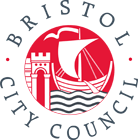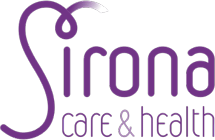More on Active Lives
The Active Lives Health Integration Team (HIT) draws together a range of people who aim to improve activity and health in later life. We are researchers, older people, practitioners, and commissioners, working collaboratively across the public, private, voluntary and community sectors.
Exercise has the potential to improve physical, mental and emotional health and wellbeing throughout an individual’s life. But sedentary behaviour dramatically increases health risk in older people and disproportionately affects people with low socio-economic status, leading to health inequalities. This HIT focuses on adults aged 55 years and over, with particular emphasis on older age groups and people who experience disadvantage through poverty or discrimination.
Evidence
The Chief Medical Officer revised physical activity guidelines for older people in September 2019. The new guidelines acknowledge that older people may not want to engage in organised sport and that all movement is potentially valuable. They say:
Older adults should do some type of physical activity every day. Any type of activity is good for you. The more you do the better.
Adults aged 65 and over should:
- aim to be physically active every day. Any activity is better than none. The more you do the better, even if it’s just light activity
- do activities that improve strength, balance and flexibility on at least 2 days a week
- do at least 150 minutes of moderate intensity activity a week or 75 minutes of vigorous intensity activity if you are already active, or a combination of both
- reduce time spent sitting or lying down and break up long periods of not moving with some activity
Physical inactivity is one of the leading risk factors for poor health and disability in later life (Newton et al, 2015).
There is evidence that middle aged and older adults are not active enough to maintain good health. For example, fewer than 30 per cent of 65-74 year olds and 15 per cent of those aged 75 years and over report any physical activity lasting 10 minutes or more in the previous four weeks. This is particularly true of older people living in poverty and/or with long term conditions.
The wider impacts of COVID-19, lockdown measures and fear of COVID have had a disproportionately adverse effect on the health of older people (aged over 65 years). According to Public Health England, this group has experienced significant loss of physical, psychological, and functional capacity due to inactivity (Public Health England, Wider impacts of Covid-19 on physical activity, deconditioning and falls in older adults, August 2021).
Aims and objectives
Active Lives HIT aims to encourage the adoption of physical activity and other positive health behaviours by people of all ages to improve the overall health of our population in their later years. We will particularly focus on reducing the gap in years of good health experienced by the most disadvantaged communities in BNSSG, compared with the most affluent.
We will do this by:
- working with BNSSG Integrated Care System (and building on existing BNSSG achievements) to develop and embed evidence-based structures and practices that will lead to ‘prevention at scale’ through increased uptake of physical activity
- promoting the principle of ‘teachable moments’ within all care pathways
- supporting and promoting the co-design, delivery and evaluation of approaches such as ‘pre-habilitation’, self-management of long term conditions, social prescribing through established relationships with community and voluntary partners and their umbrella organisations
- using population health data and system-wide data sets, we will support appropriate targeting of interventions and evaluation of outcomes.
Presentations
View the poster (PDF) presented by the HIT at the 2019 Bristol Health Partners conference.






